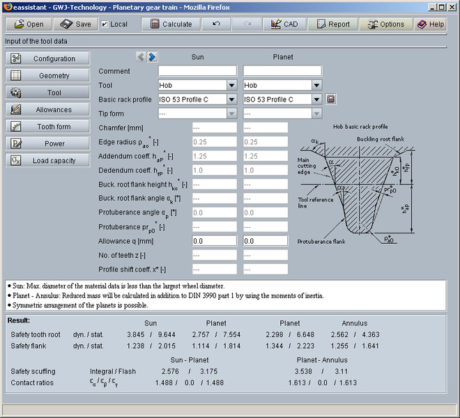 Standardization, from the English Standard, but also Unification, term that we find anyway precisely in the full denomination of UNI, the national standardization body: they are the words used to identify the regulation definition activity.
Standardization, from the English Standard, but also Unification, term that we find anyway precisely in the full denomination of UNI, the national standardization body: they are the words used to identify the regulation definition activity.
Nevertheless, the first impression we have while browsing rapidly the ISO regulations about the calculation of gears is not precisely unification or unity: even limiting the analysis to the only cylindrical gears, we can find several different numbers, one, or almost one, for each of the failure phenomena to which refers the single regulation, or anyway the single document, considering that not all have reached the regulation status.
Therefore, if nobody has some doubts about the ISO-6336, which deals with the two fundamental yieldings, pitting and bending, it is not impossible to find some failures among sector players about the identification codes of the other phenomena: ISO/DTS 19042, for the flank fracture, or ISO/TR 13989 for the scuffing, parts 1 and 2 respectively for the flash and integral temperature methods, or ISO/TR 10495 for the calculation of the lifecycle under variable load conditions in conformity with ISO 6336, just to make some examples.
Then, the new asset that ISO has deliberated for calculation rules will be certainly welcomed with great favour, as it provides for the unification of the different calculation methods inside the ISO 6336, in its different parts.
It is sufficient to connect with the ISO site and to look for the activities of TC60/SC2, which precisely treats calculation rules, to obtain highlighted numeration novelties. In the section dedicated to the regulations under development phase it is in fact possible to verify that the ISO 6336 still has a part 2 and 3, respectively dedicated to pitting and bending, part 4 hosts, as already provided for, the flank fracture whereas the part 6 concerns the calculation of the lifecycle under variable loads, parts 20 and 21 regard the scuffing test according to flash and integral temperature respectively and finally a part 30, which illustrates calculation examples, developed according to the parts 1,2,3 and 5.
Certainly, the essence does not change and the calculation of gears will still be a complex and articulated discipline but the simplification, at least in the form, will certainly favour those dealing with it daily.



